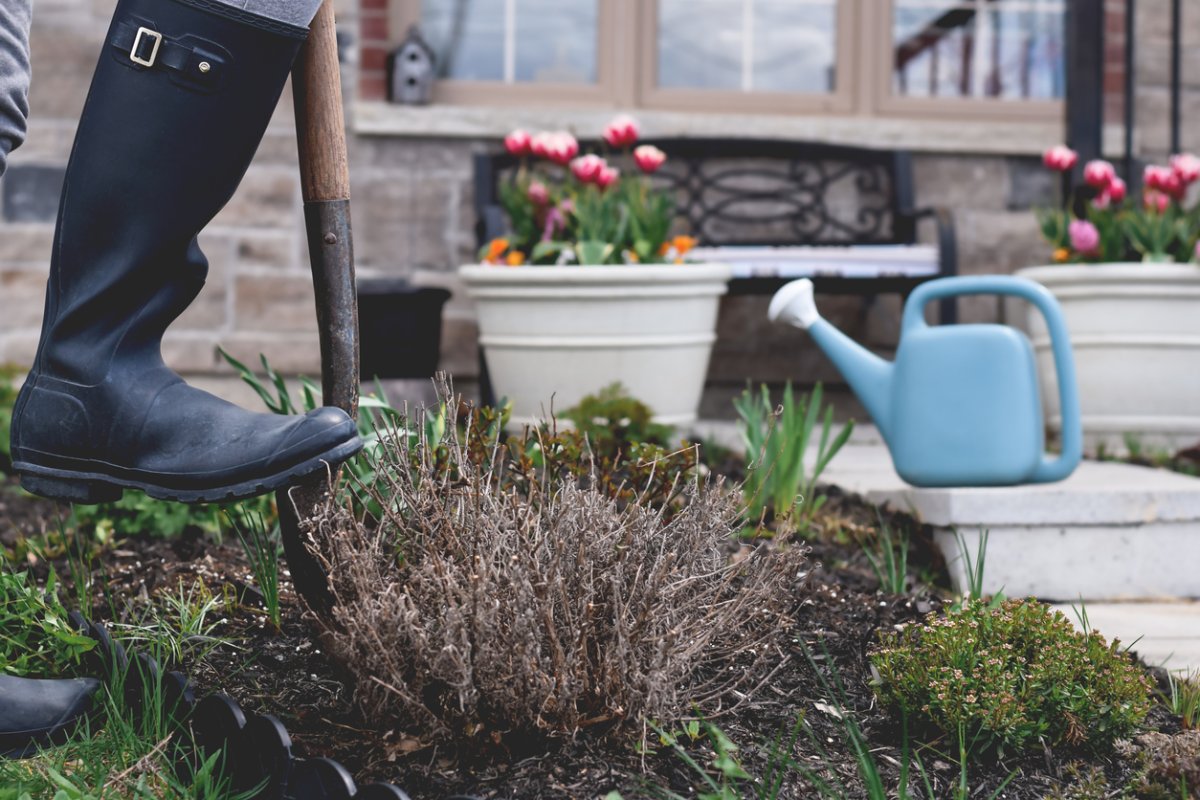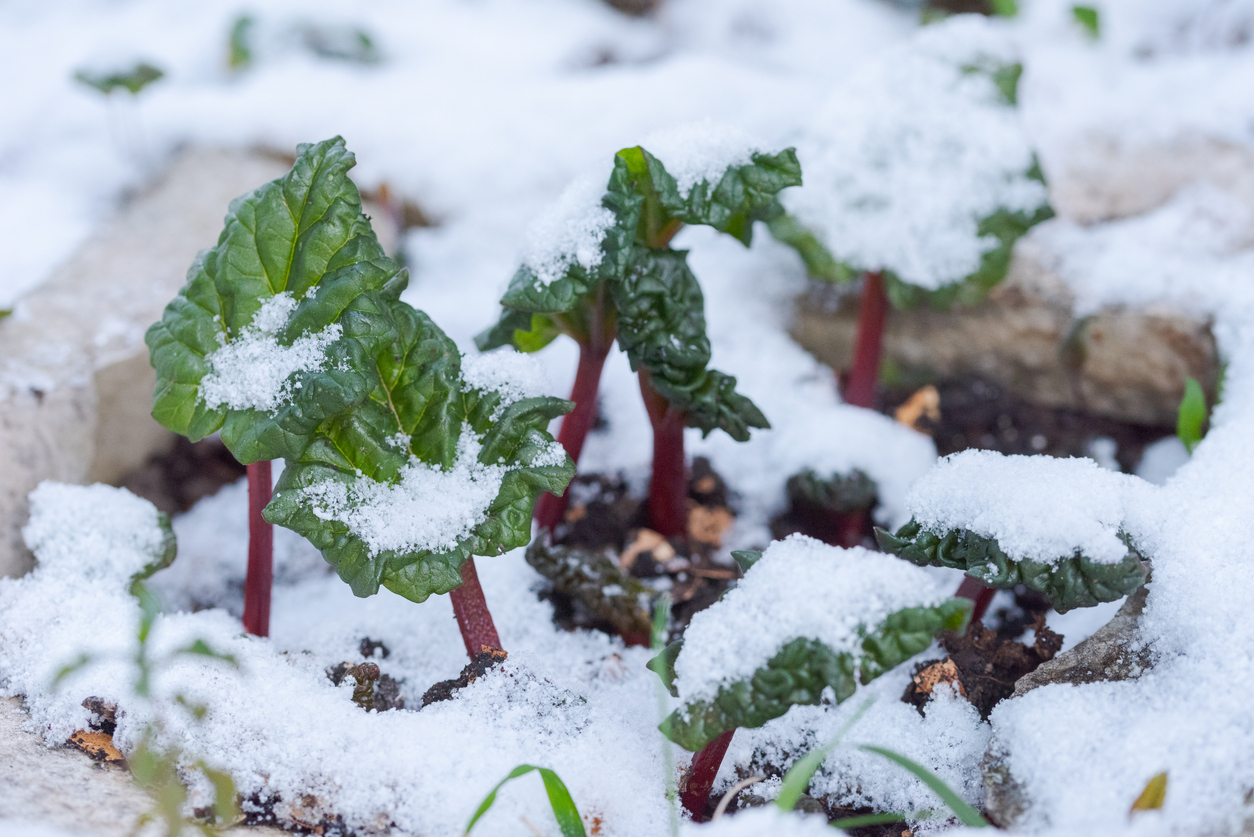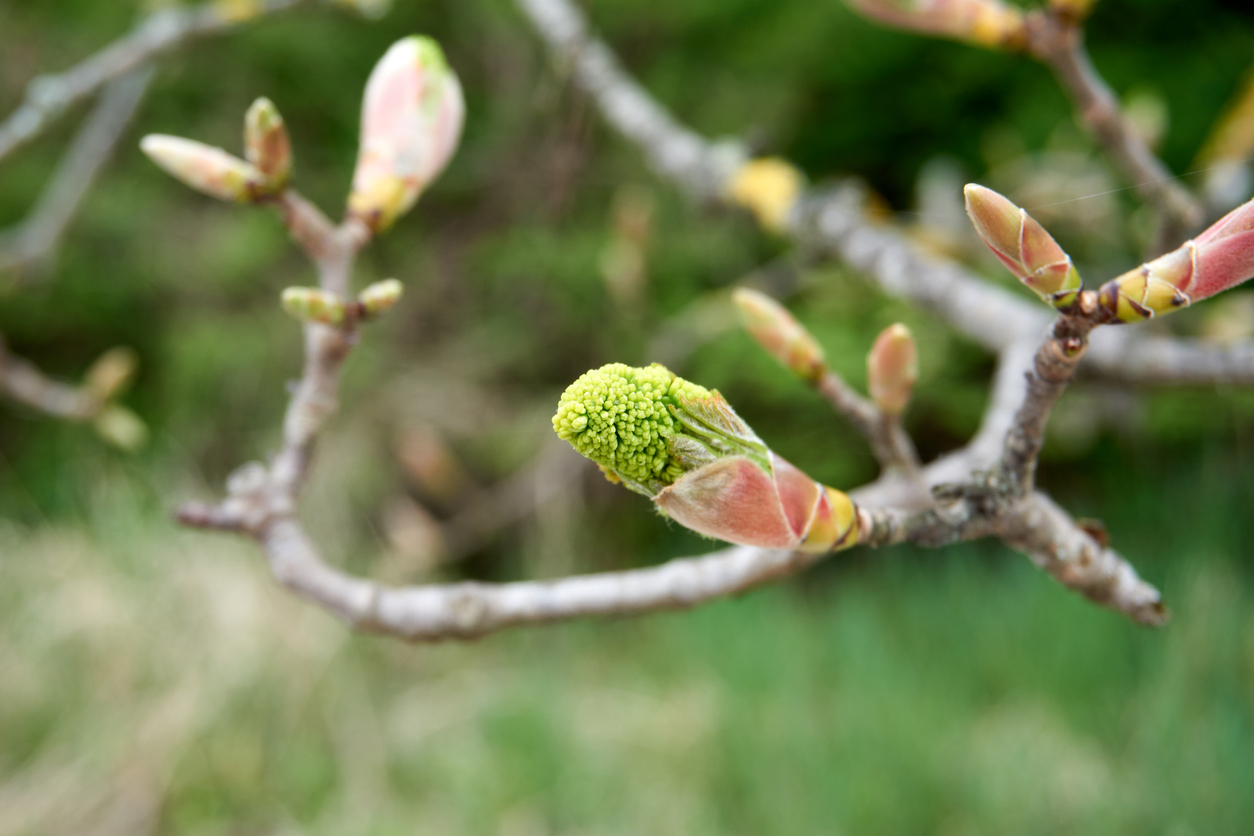

We may earn revenue from the products available on this page and participate in affiliate programs. Learn More ›
As the days get longer with spring’s imminent arrival, gardeners look for indications that their beloved plants are beginning to break dormancy. With roots or rhizomes safely snug underground for a winter nap like a hibernating bear, most dormant plants begin to show signs of waking up for spring with longer days of sunshine and warmer temperatures.
While early bloomers are easy to spot, some plants may fail to exhibit signs of life. The trick is determining whether they’re merely late bloomers or if they quietly passed during the winter.
Snap-Scratch Method

To test whether trees and woody shrubs like forsythia and Russian sage are dead or dormant, use the snap-scratch method. Bend a branch. If it’s alive, it will bend. If it’s dead, it will snap. Since some branches can die without the entire plant dying, check a few branches.
Alternatively, scratch a small area of the bark with a knife or fingernail. Signs the tree is dying includes branches that appear brown or gray inside. Live branches are green or white inside.
Root Check

For smaller plants, especially ground covers like creeping phlox, check the roots for signs of life. Shriveled, moldy, dry, brittle, or mushy roots are a good indication that the plant is dead. Light-colored, supple roots that are fleshy and look healthy indicate dormancy.
Even if the outer layer of roots is bad, the core may still be alive. Check the primary root(s) for signs of vitality before giving up on a plant.
Signs of New Shoots

Some perennial bushes and plants, such as peonies and rhubarb, have tuberous roots that reside close to the soil surface in order to achieve the cooling required for blooming. Their foliage dies back to the ground after the first frost. Many gardeners then cut stems to the ground, but whether the old foliage remains intact or not, check the ground in the spring for signs of new shoots poking through the soil.
Budding Behavior

On some woody flowering trees and shrubs, such as apple trees, dogwood, and lilacs, buds begin forming in the fall, but these small buds stay close to the plant and feature a protective, leathery or scale-like covering through the winter. As the sap begins to flow in the spring, the buds swell noticeably – a sure sign of life and new growth.
